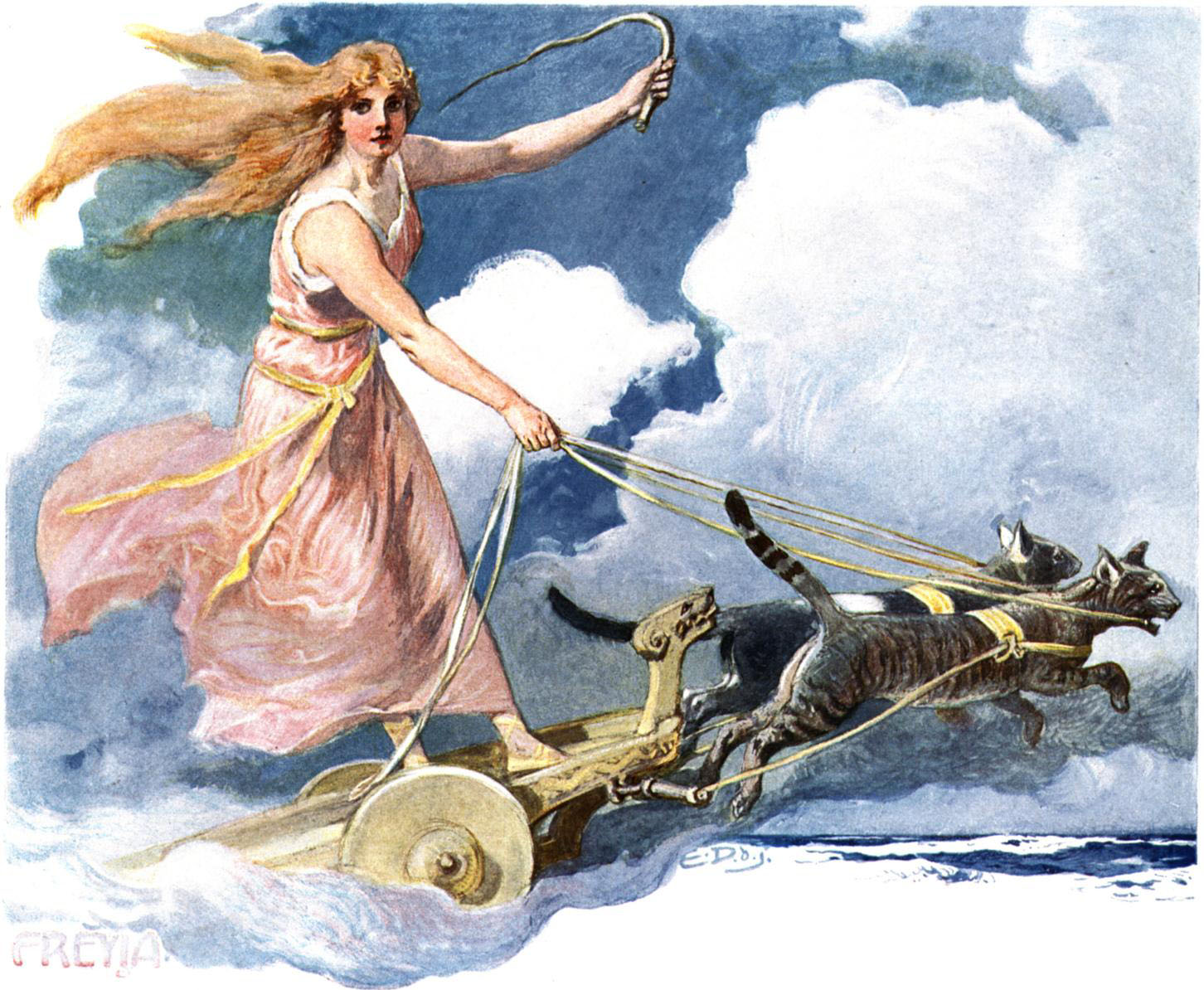Fólkvangr, The Peaceful Norse Afterlife
Many know of the legendary Valhalla (or Valhǫll as it is known in Old Norse, the language of the Norsemen during the Viking Age), by far the most popular form of Norse afterlife, a great hall or palace of Odin (the leader of the Æsir gods) which exists in a parallel dimension (i.e. Asgard, on one of the upper branches of Yggdrasil, the sacred cosmic ash tree of life in the Norse cosmology) wherein brave fallen Vikings who are picked on the battlefield by the legendary Valkyries are taken to, a paradise or euphoric place of everlasting feasting but also fighting in preparation for the Ragnarök, the twilight of the gods or the traditional Norse version of the apocalypse. The most powerful of these warriors who relentlessly fight in Valhalla after day (to have their wounds healed by night) go through the process of becoming Einherjar (i.e. the champion Norse warriors who will help the Norse gods during Ragnarök). Nonetheless, in stark contrast, there is also another dimension or place of the Norse afterlife, not as popular as Valhalla, but definitely no less important, more specifically Fólkvangr (meaning host’s field in Old Norse).

In the Norse mythology, Fólkvangr is believed to be a beautiful plain or meadow and the domain of the beautiful goddess Freyja. Image source: www.pixabay.com

The beautiful Norse goddess Freya in her chariot which is pulled by two cats called Bygul (i.e. bee gold) and Trjegul (i.e. tree gold), as envisaged by German painter Emil Doepler. The two cats are thought to be a gift to Freyja from Thor, the Norse god of thunder. Image source: Wikimedia Commons
Fólkvangr is essentially the partial opposite of Valhalla as it represents the peaceful version of the Norse afterlife. Governed by the beautiful goddess Freyja, the wife of the god Óðr, this realm is also meant for honourable warriors (half of these warriors get to be transferred after death to Valhalla, i.e. Odin’s domain, while the other half are transferred to Fólkvangr, i.e. Freyja’s domain). Freyja (or Freya) is, among others, the goddess of both love and war (and, paradoxically, sometimes love can be a battlefield as well).
Sessrúmnir (meaning seat-room) is the name of the hall of Freyja in this realm and, very much unlike Valhalla, is considered more peaceful and serene. While this realm is primarily intended for half of the brave Norse warriors, other mortals can also accede here (as per Egils saga, in which a woman who claims not to serve food ever again until she will dine with the goddess Freyja herself gets in this hall as well). In Old Norse sources, Fólkvangr is attested in both the Poetic Edda, a compilation of anonymous poems, and the Prose Edda by Icelandic author Snorri Sturluson, both written during the 13th century in Iceland.

According to the Norse mythology, the hall Sessrúmnir is located somewhere on the field that Fólkvangr represents in a parallel dimension to our own, that is the mortal realm of Midgard. Image source: www.pixabay.com
Bonus facts: Sessrúmnir is also the name of a ship. There is also a chocolate brand called Freia in Norway which I heard is very good. A great Danish animated film for all ages called Valhalla was released in 1986 and was evidently inspired by the eponymous Norse afterlife type. Thank you very much for your time, attention, and readership! All the best!
Documentation sources and external links:
- Folkvangr – Freyja’s Field of The Fallen (Norse Mythology) on www.symbolsage.com
- Folkvangr on www.britannica.com (the online version of Encyclopædia Britannica)
- Fólkvangr on www.wikipedia.org (in English)
- Sessrúmnir on www.wikipedia.org (in English)
- Sessrúmnir on www.mythus.fandom.com (in English)
- Sessrúmnir on www.en.wiktionary.org (in English)
- Chariots of Freya on www.learn1.open.ac.uk
- Valhalla Vs. Fólkvangr (Folkvang) on www.norsemythologist.com
- Fólkvangr in Norse Mythology on www.worldhistoryedu.com
- Valhalla: fighting and feasting in the Viking warrior afterlife on www.historyextra.com

